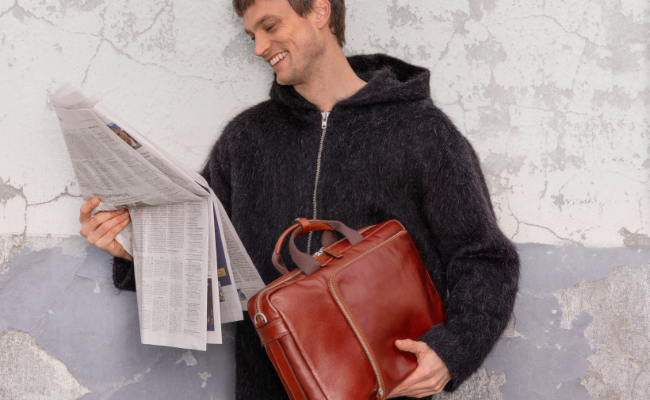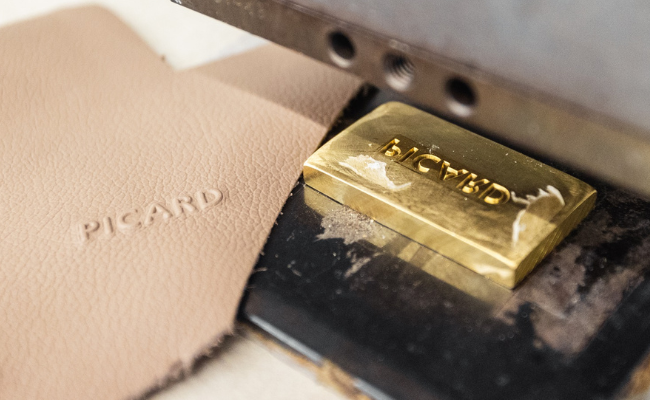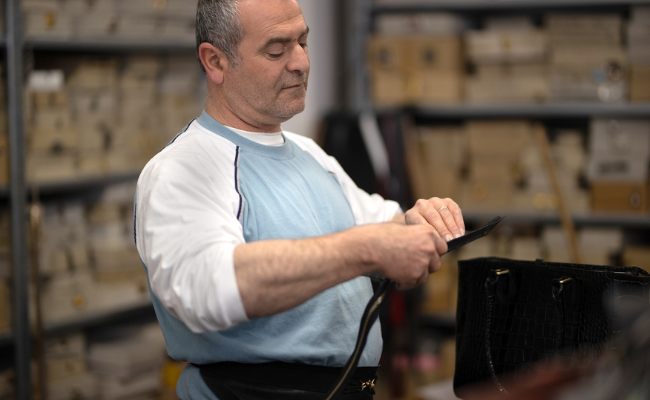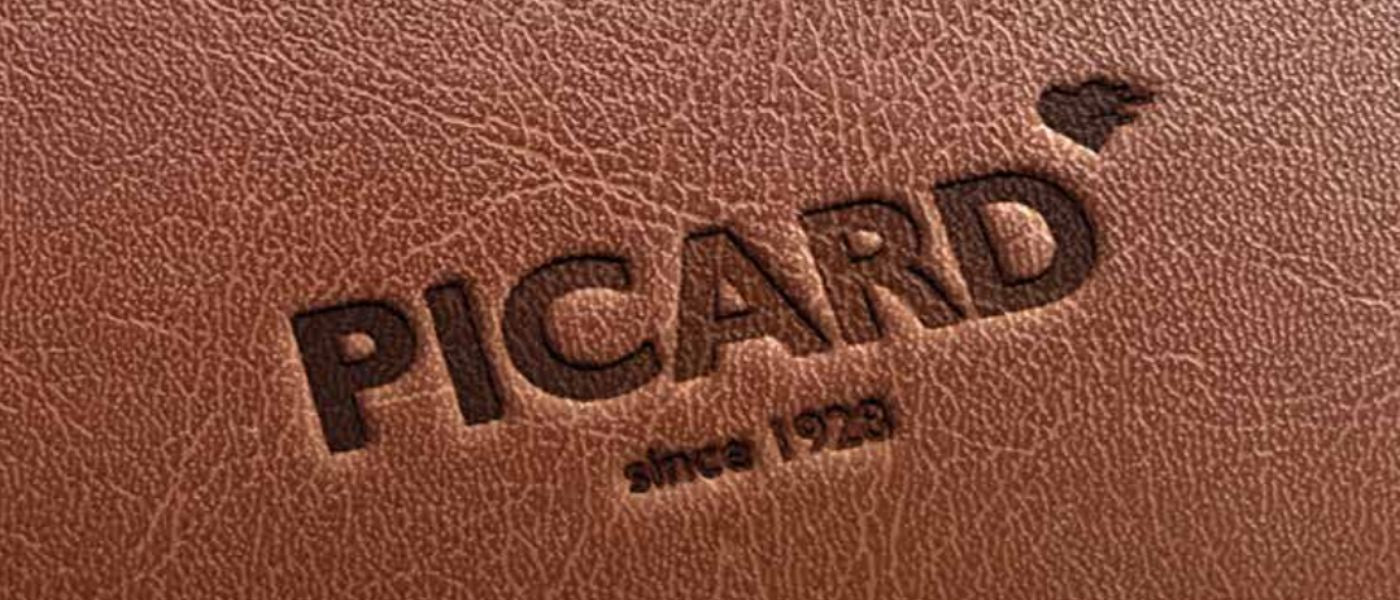Leather is unique by nature, but it can be personalized using various embossing techniques . Not only small embossings, such as logos, names or lettering, are possible, but large-scale embossing of the leather is also possible.
There are different ways to emboss leather, this is mostly practiced by leather manufacturers, you can find out why and how in our guide.
Would you like to get your hands dirty and emboss your leather yourself, giving it your own signature?
No problem, we'll show you how it's done and explain which tools you need. So get to work on the leather!

Why is leather embossed?
To personalize leather goods, logos or individual motifs are often embossed into the leather. You often find this type of personalization on leather accessories such as belts, handbags, wallets or cell phone cases.
But shoes and leather clothing can also be provided with a small embossing.
The logo is often embossed or printed into the leather. But entire images and ornaments can also be embossed into the leather; there are almost no limits to the creativity of the leather manufacturers.
Leather is a natural product and can have irregular grain patterns . In order to bring these into a uniform shape , the leather is embossed with a uniform grain pattern.
Expert knowledge : This is also referred to as pressed grain , as the grain pattern has been subsequently changed . However, the entire surface is not only embossed to create a uniform grain pattern. Various fashionable patterns and structures can also be embossed into the leather in this way.
The uniform embossing of the leather also minimizes waste , which contributes to sustainability .
Unfortunately, the leather of protected species such as crocodile and snake is still popular; in order to protect these species in the long term, deceptively realistic reptile embossings are also embossed into the leather.
What methods of leather embossing are there?
Pressing, rolling and stamping are the three methods used for leather embossing.
In the leather industry, embossing is applied to large areas of leather, which requires large and effective machines such as rollers, stamps or presses.
-
Pressing: The damp leather is placed in the press, the motif plates carry the negative, i.e. the pattern to be transferred.
The pressure, temperature and length of pressing determine the strength of the embossing. The press produces more intensive embossing. For this reason, the press is usually used for grain embossing instead of roller embossing.
-
Rollers: Do you still remember the hot mangles or ironing machines that used to iron everything wrinkle-free?
The roller technique used in leather embossing works in a similar way. The rollers carry the negative on their rollers, the moist leather is embossed between the rollers and thus receives its pattern.
- Stamping: The embossing stamp is pressed onto the leather with high pressure, either cold or hot, to create the stamped impression. The motifs are placed in the stamp and then applied to the leather.

Is every leather suitable for embossing?
Yes, almost all types of leather can be embossed, but of course the embossing settings must be adapted to the leather. Pressure, temperature and length of the embossing must be tailored to the leather to be embossed.
Chrome-tanned leather in particular must be moistened before the embossing process in order to achieve optimal embossing.
Of course , soft leathers are easier to emboss than robust and thick leathers. Vegetable-tanned leather is particularly easy to emboss.
Can you emboss leather yourself?
Embossing and personalizing the leather yourself at home is no problem at all. You don't need a lot of tools to give your leather a personal touch.
We'll show you how to emboss leather yourself and let the Picasso in you run free.
1. Buy embossing stamps for leather
There is now a really large selection of embossing stamps available online and even sets that contain all the necessary utensils (stamps, hammers, motifs, letters, etc.). You can even buy personalized stamps.
2. Place leather on the work surface
Now place the leather on a stable, clean and smooth surface . The top side of the leather, where the embossing will be applied, must face upwards.
3. Wipe leather with a damp cloth
Moisten the leather with distilled water, preferably with a well-wrung sponge. Please do not moisten it too much.
4. Position the stamp at the desired location
Have you chosen the place where you want your embossing to be visible? Great, then place the stamp exactly there and hold it in place with one hand. You will need the other hand in the next step.
5. Embossing with the wooden hammer
Now tap the embossing stamp several times with the wooden hammer, making sure that it does not slip. To check how strongly the pattern is embossed, carefully lift the stamp and see whether the result is intense enough for you or whether you need to tap a little harder.
Repeat the process until you have achieved the desired result, making sure to position the stamp in the same place each time.
If you have to tap and check a little more often when you first stamp, that's completely normal, because it takes a little practice to know how hard to tap the stamp.
What factors need to be considered when embossing leather?
These four factors can influence the embossed image positively or negatively, so it is important that all of these factors are meticulously adhered to.
-
The temperature is crucial for the intensity of the embossing; if it is too cold, the embossing may be weak.
If the temperature is too hot, it can damage the leather and the embossing can become too deeply ingrained in the leather.
-
The pressure must be adapted to the leather and the temperature in order to obtain a perfect and intense embossing.
In addition to the pressure, the duration of the pressure must also be adjusted; the longer the pressure, the more intense and durable the embossing.
-
The moisture of the leather is important for the intensity of the embossing; embossing is easier in damp leather.
-
The texture of the leather is of course an important factor in leather embossing; the thicker the leather, the longer the pressure must be applied to the leather.
Soft leather is easier to emboss, but does not require the same pressure as thicker and harder leather.
Conclusion
The world of leather embossing opens up fascinating possibilities for individualizing leather goods and giving them a personal touch.
Whether it's adding logos, creating patterns or enhancing grain, this technique is widely used on belts, handbags, shoes and more.
Impressive results can be achieved using various embossing methods such as presses, rollers and stamps. Almost all types of leather can be embossed, although adaptation to the respective leather is crucial. If you want to emboss leather yourself, you only need the right tools and a little practice.
FAQ
Where can you have leather embossed?
To have leather embossed, you can contact a craft business near you. There are also some online service providers that you can hire.
Can you emboss artificial leather?
Yes, faux leather can be embossed, but the process is different from real leather . Using special tools and heat, the faux leather is heated and embossed because it does not have the natural grain structure of real leather.
The result may look similar but is less permanent.
Can you remove embossing from leather?
Yes, embossing on leather can be removed, but this requires special techniques and equipment. Some methods include sanding or polishing the embossed surface, but this can damage the leather.
It is advisable to leave this to an experienced leather craftsman or restorer.
Find out more by reading our other articles.








